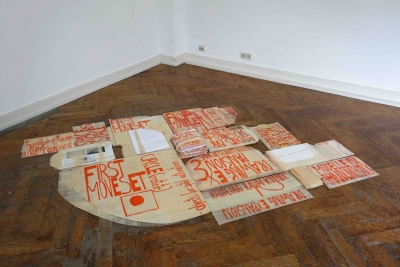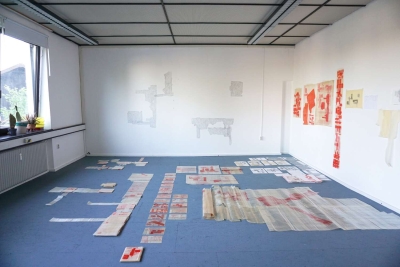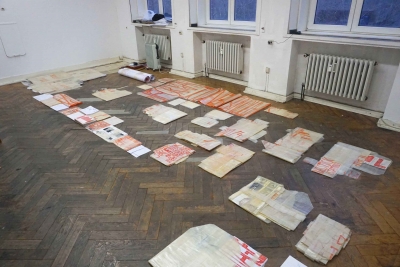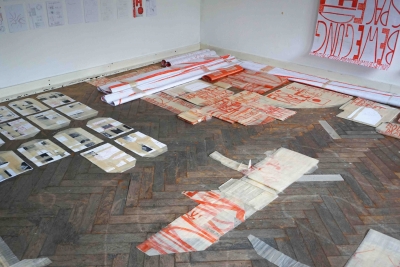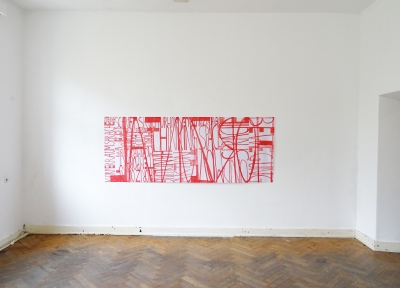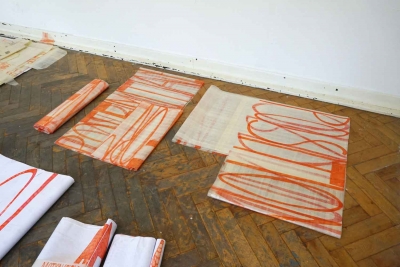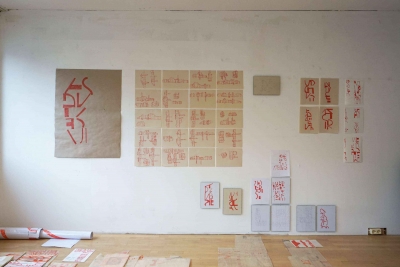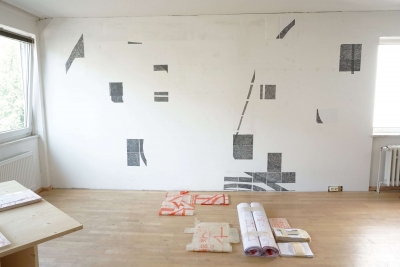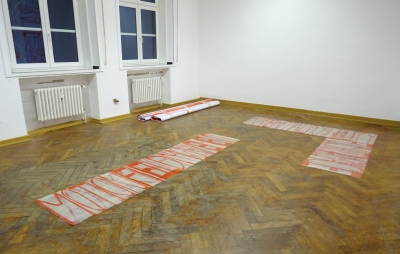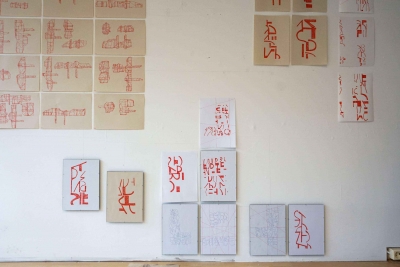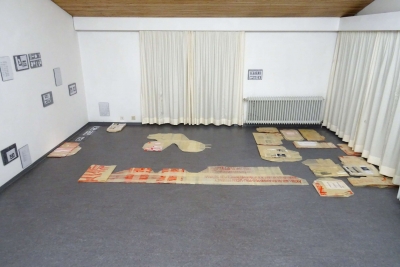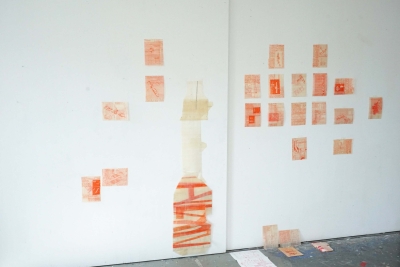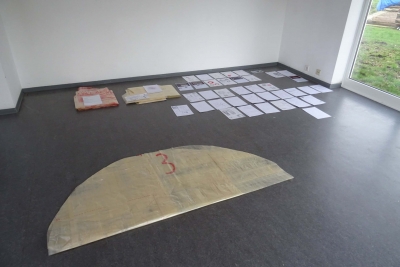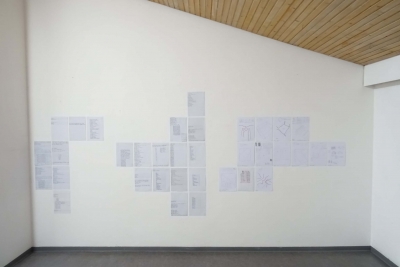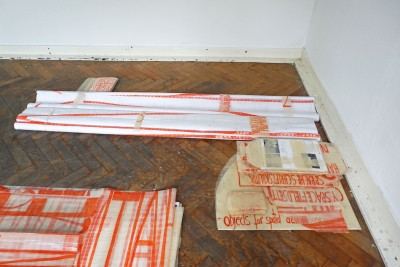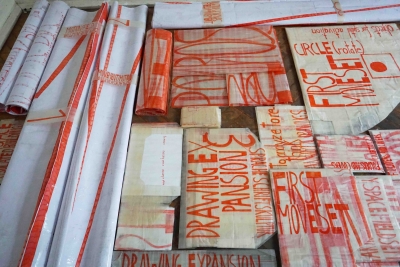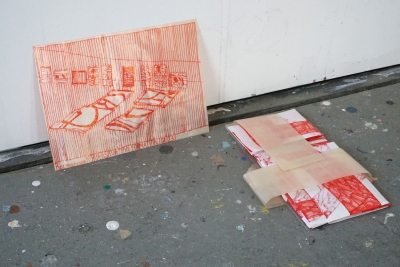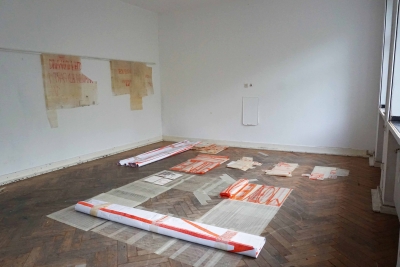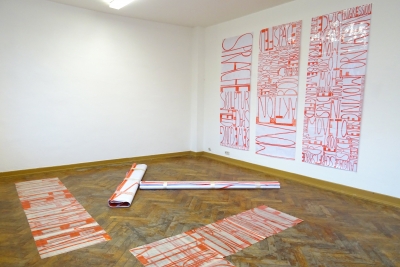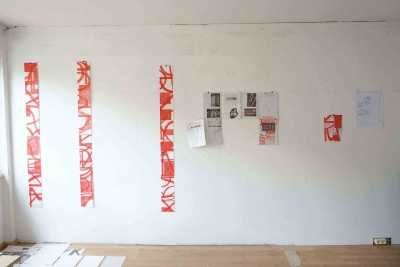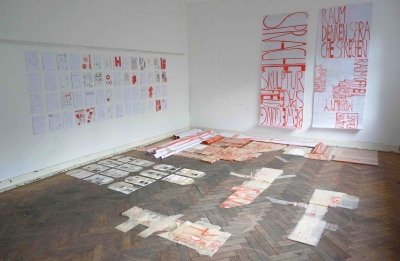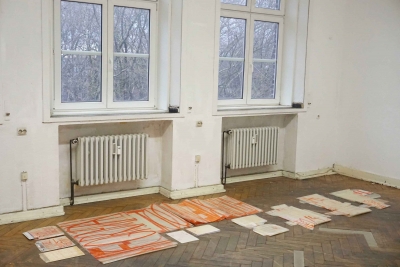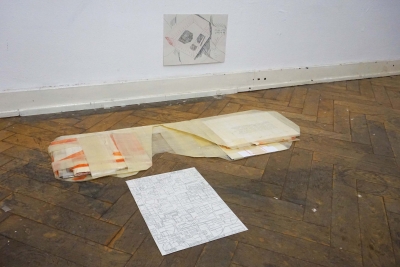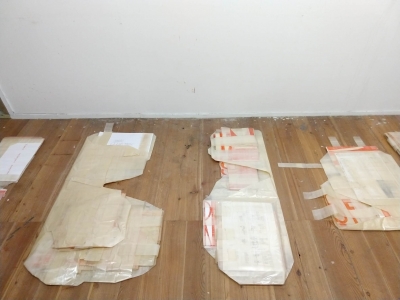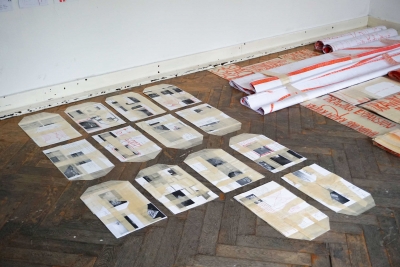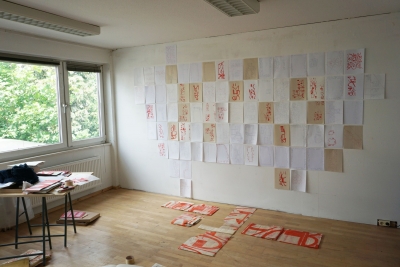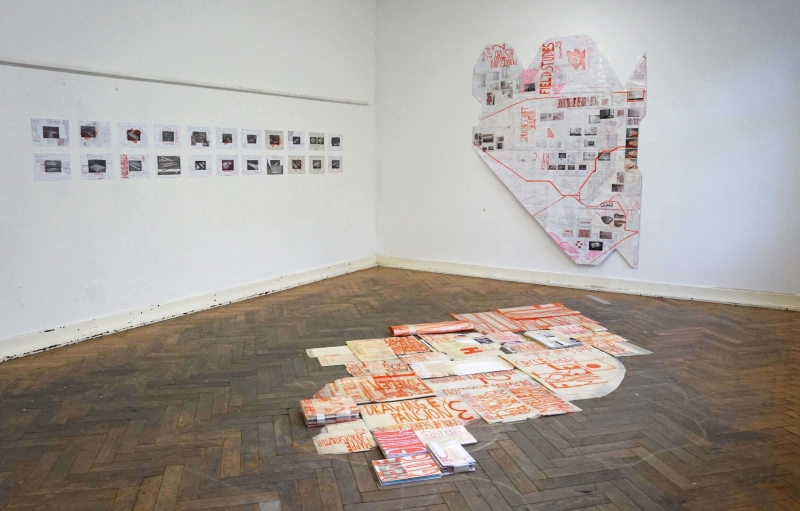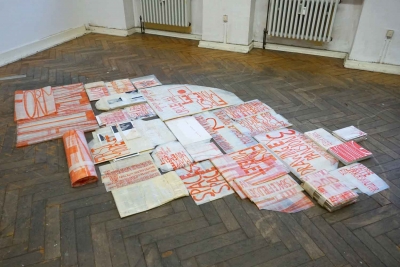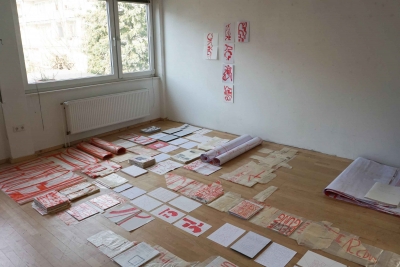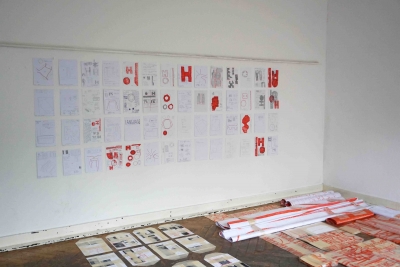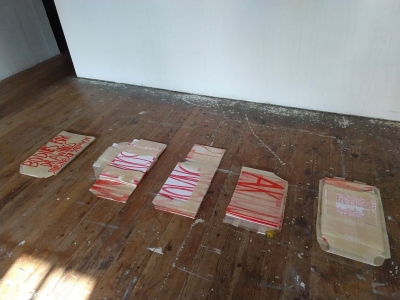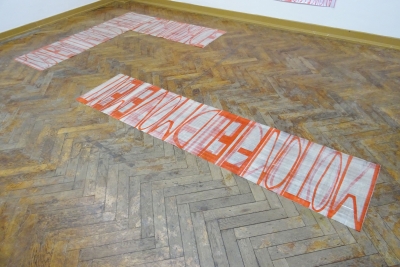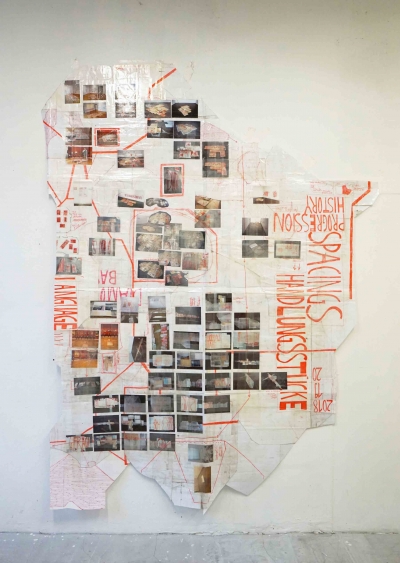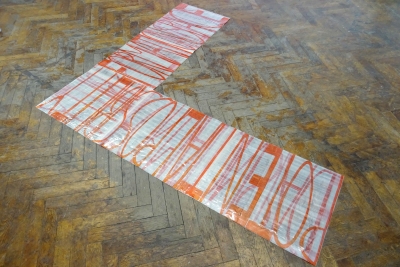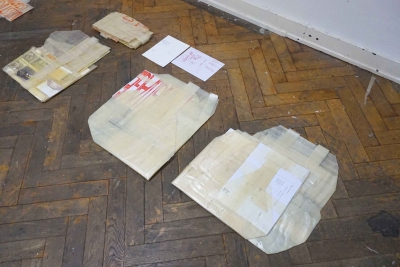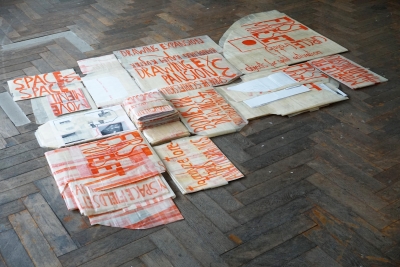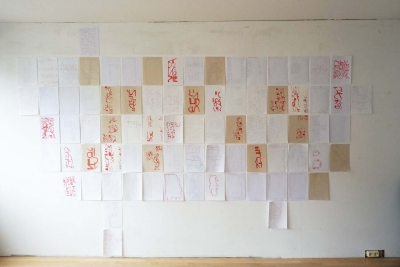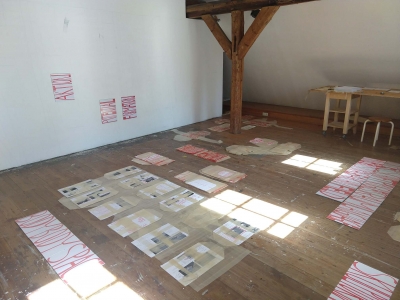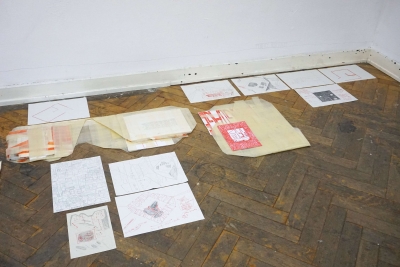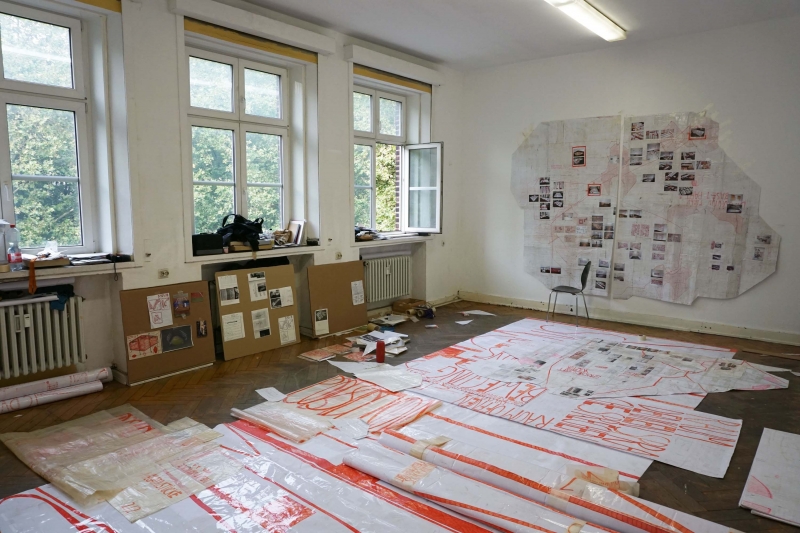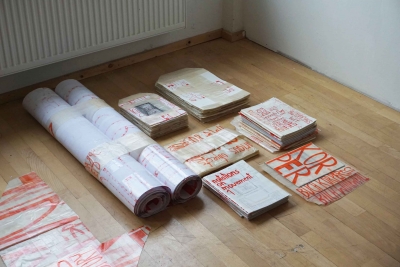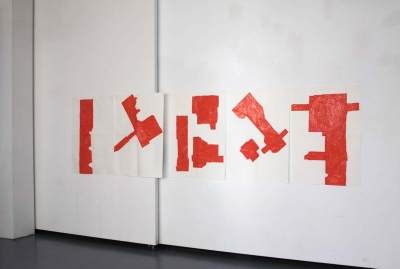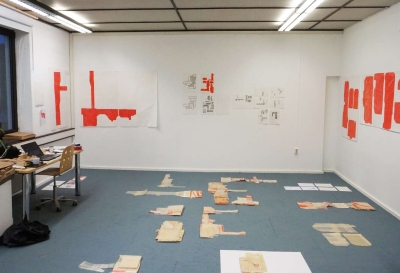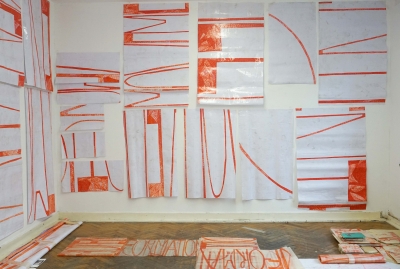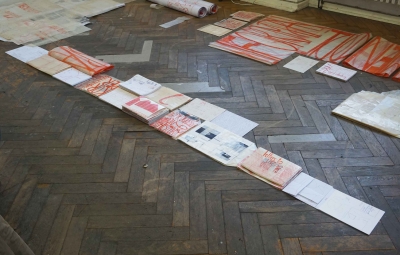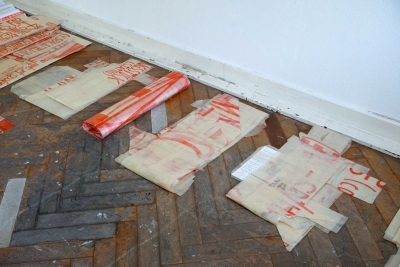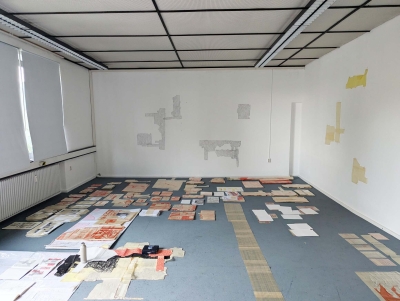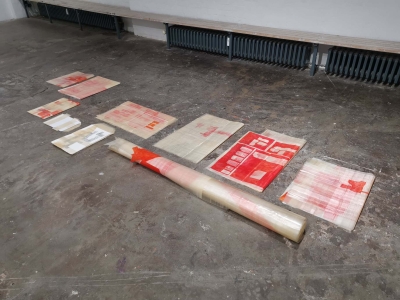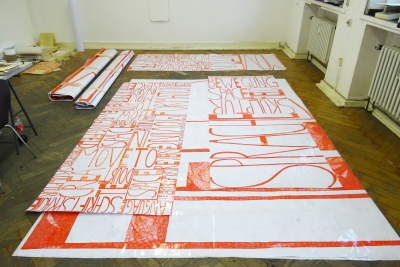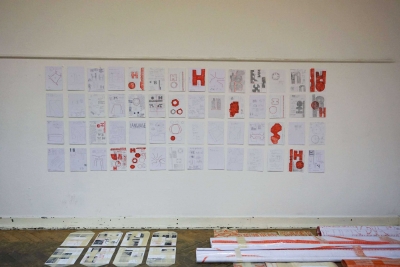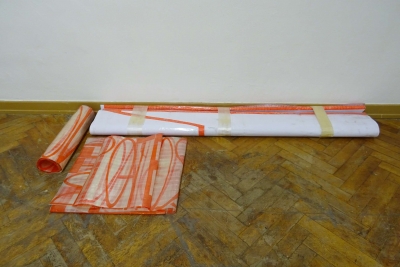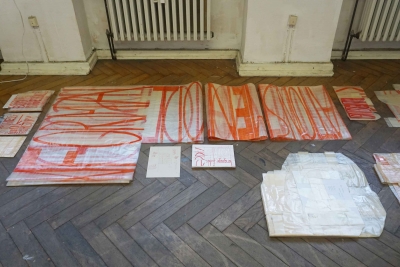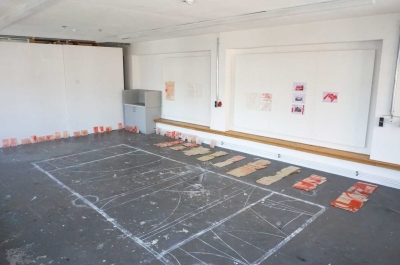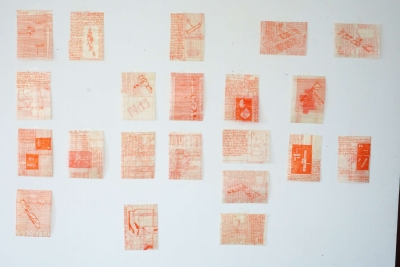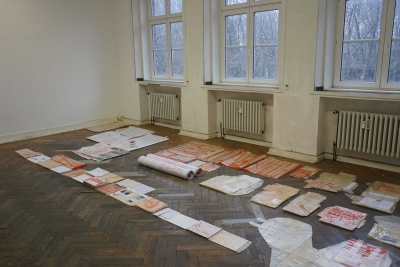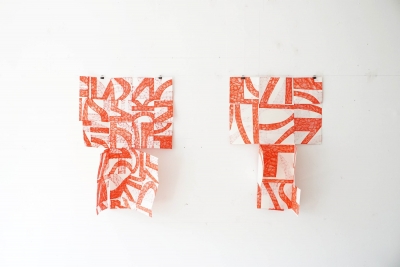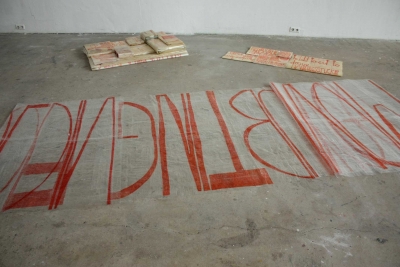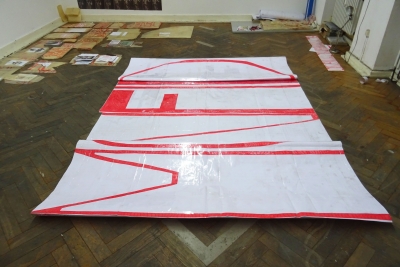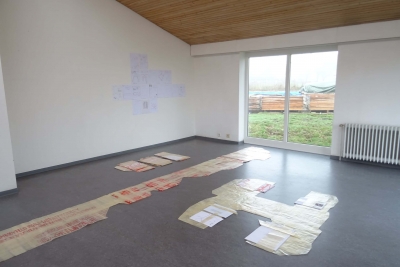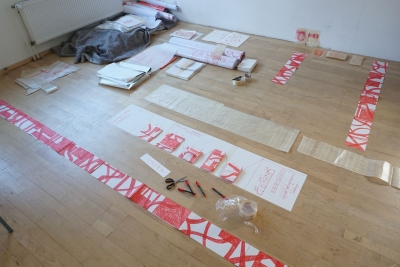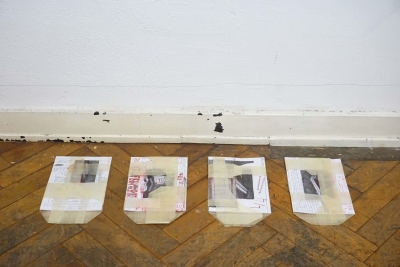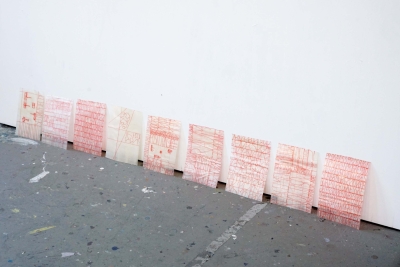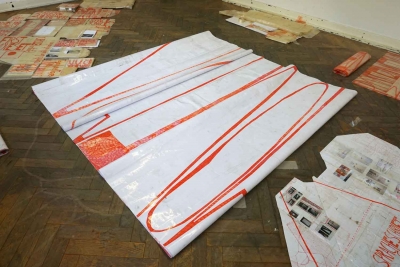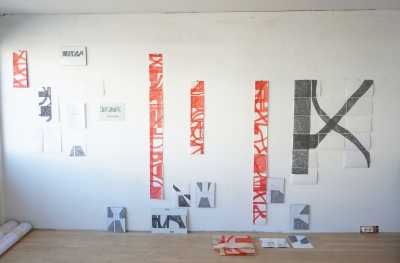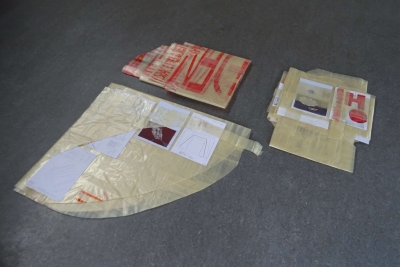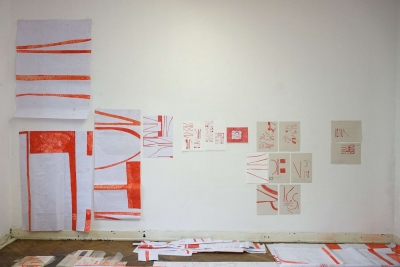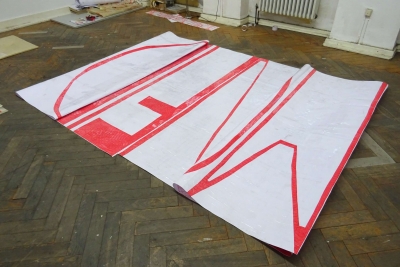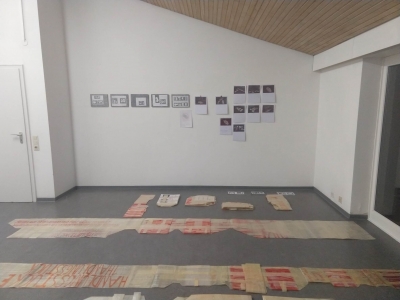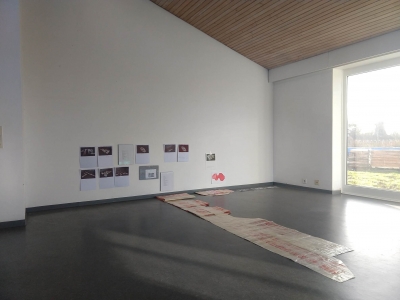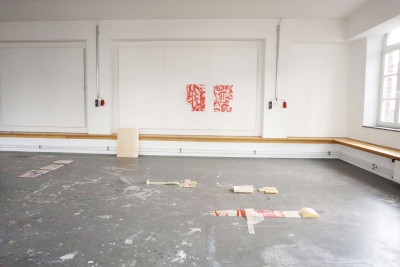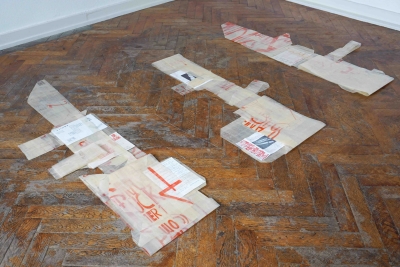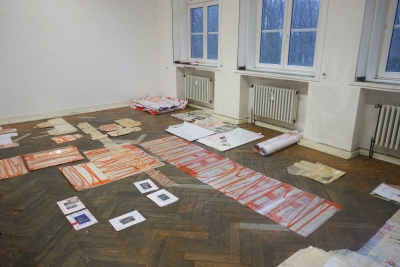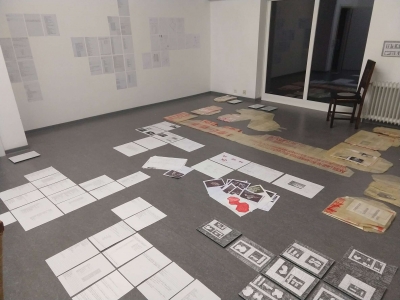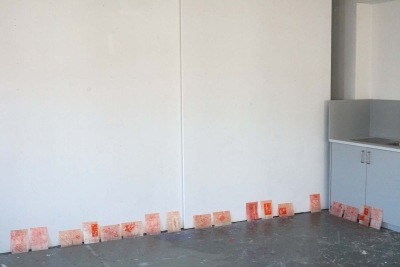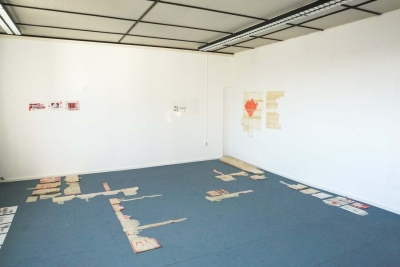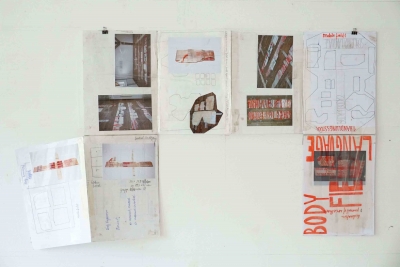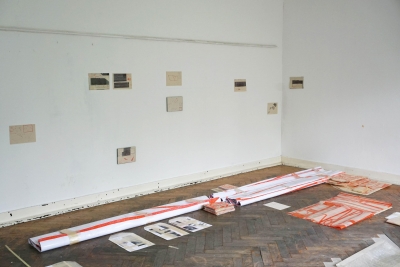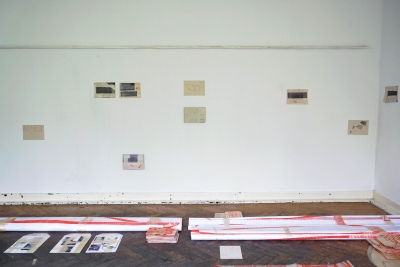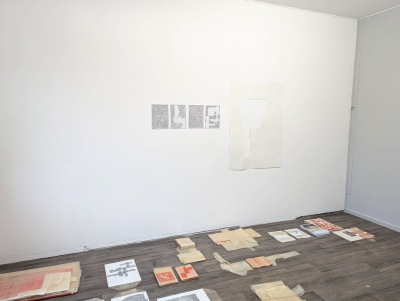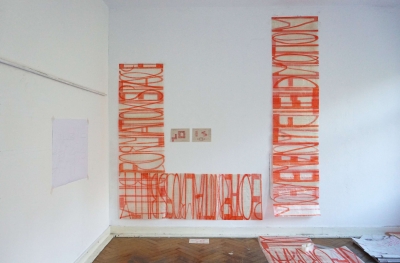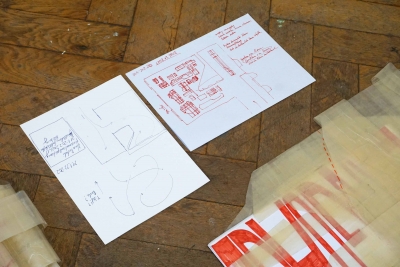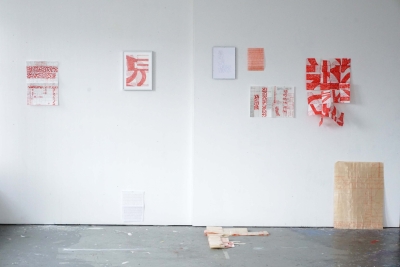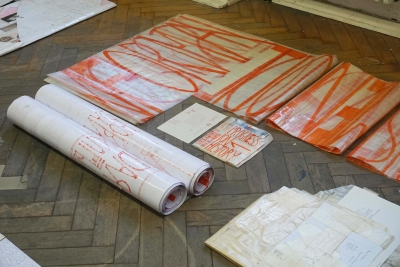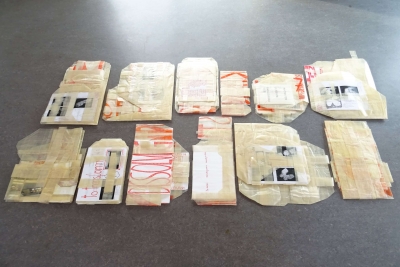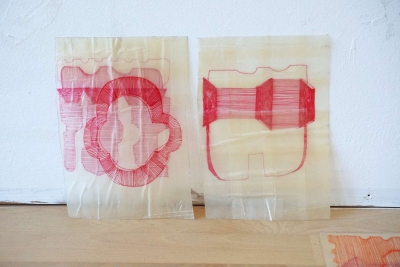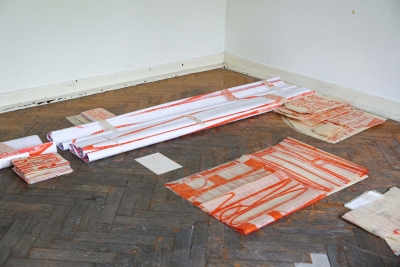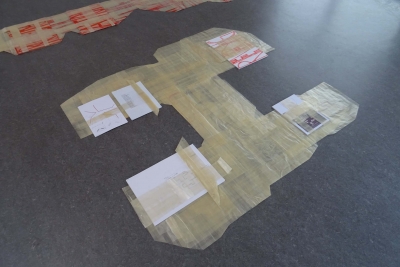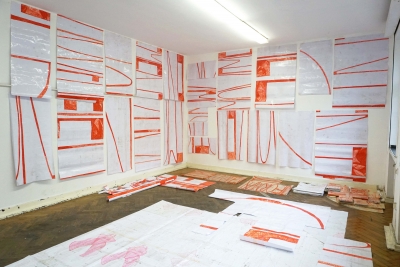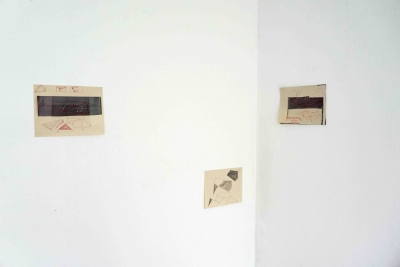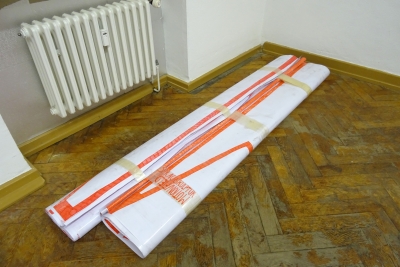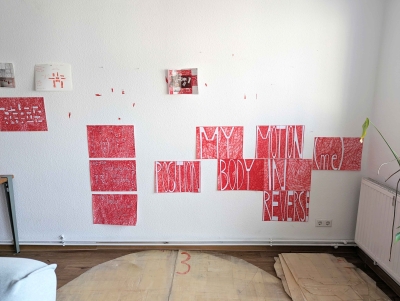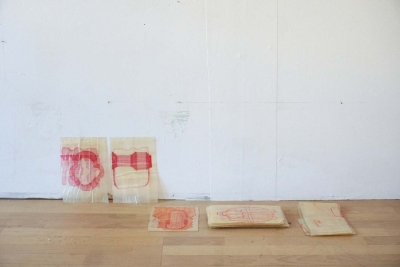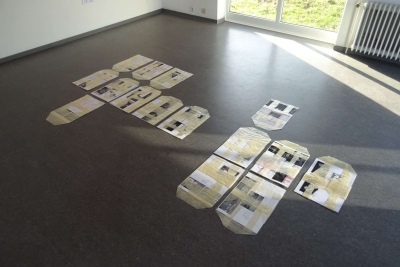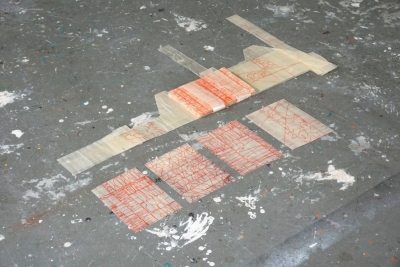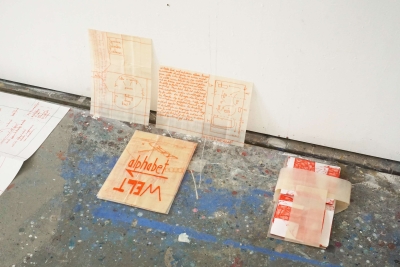- - notes: writing notation (2025) / thoughts on wall drawings/keeping score/b o d y s c o r e s
- - Kraftfelder, Andreas Bee (2018)
- - Zweifel in Permanentmarkern und Gedankenstrichen, Julika Bosch (2024)
- - In Formation bringen , Lisa Thiele (2023)
- - Spielfeld des Verstehens: Durchdeklinieren von Raum, Sprache und Bedeutung , Annekathrin Kohout (2024)
- - notes: my drawing process (2023)
- - notes: Reminder to myself (2022)
- - notes: what is (a) body? (2022)
- - SPACE BOOK, vocabulary of space, Annett Reckert (2020)
- - MOBILE BODIES, Aneta Palenga (2019)
- - LANGUAGE SPACE SCULPTURE, Petra Stegmann (2019)
LANGUAGE SPACE SCULPTURE
Petra Stegmann
1. questioning of body and space
Nico Pachalis Bodies lie on the floor like little ufo`s. Made of semi-transparent foil and paper, these flexible and performative objects are at once archive, sculpture and action piece. They are located in the field of tension between transparency and concealment, readability and illegibility, standstill and movement. A special role is played by the writing, which - often legible in fragments - shines out in red and offers the viewer an associative field of terms: DESCRIBING SPACE, CONFINING SPACE, REJECTING SPACE, SHIFTING SPACE, to transform, to fold, to mark.... The location of the body in space is explored - the body of the artist and the artistic object, which here represents its creator and becomes its object of reference. It is about the change of the space through the work and the three-dimensionality of what is actually two-dimensional (writing, drawing, shell). This work of questioning, researching, and doing does not provide explanations, but rather encourages the viewer to read the text elements, which have a signal effect with their red color, and to add to them in thought, to follow the traces of writing.
2. concealment and unveiling. Visibility and invisibility
At first glance, the viewer, who can look in from the outside, through a window, so to speak, but cannot reach the interior of the conceptual structure, finds mainly linguistic and graphic fragments. Yet the elements and voids combine to form a new whole, creating an alternative reading and thus opening up a new reality beyond the hidden texts. Thus, Bodies is not about understanding, but about questioning and, for the artist, also about the demands that the work, which has long since developed a life of its own, brings with it and places on him. Superficial effects, striking statements, technical virtuosity and simple aesthetic stimuli are alien to the creations, which lie naked, fragile and self-sufficient on the floor and are repeatedly transformed by the artist`s hand.
3. acting and not acting
The Bodies have a number of things in common with Franz Erhard Walther`s objects and writings: the direct placement on the floor, the emphasis on the horizontal, the (red) lettering, and the use of language. But while Walther conceives his works for use by the audience, Pachali is the only actor who acts with the Bodies; creates them by writing, drawing, and collaging texts; making skin-like covers; folding and unfolding the resulting objects; closing and opening their flaps; spreading them out and stowing them away again. The actions are not designed as performances, but remain interactions between artist and work. In exhibitions, a fixation occurs, for the duration of the presentation - like a frozen moment. The dynamic potential becomes visible but not activated. A basis of the artistic examination are the -playbooks- from American football, a kind of manual, which describes playful constellations, movement instructions and strategic maneuvers in graphic form. The horizontality of the playing field is important to Pachali, and so the drawings grow into the spatial three-dimensional, becoming a horizontal architecture and a living archive of drawings, ideas, and concepts.
4. The animation of the Inaminate. Between inorganic and organic
The works created seem to have a life of their own, working from within themselves and not needing the ausdience`s frame of reference. "Sculpture does not need the eye," wrote Franz Erhard Walther as early as 1966. Pachali produces the material for his bodies himself in an almost alchemical process (behind this was the desire for his own paper). In the process, a self-adhesive PVC film is layered in several layers, and cut, whereby cutting for Pachali is tantamount to drawing. The elaborate technique gives the industrial material an archaic look - it`s structure is reminiscent of papyrus. The envelopes, assembled in this way.form a potective cover for the drawings and become a type of skin and membrane for the objects.
5. New forms - a new language
"The BODIES need a language", wrote Nico Pachali. This seems obvious, considering the vitality and autonmy ascribed to them, that call for a specific vocabulary proper them. Additionally, the entire work complex is in constant development, which is reflected in the idea of a particular vocabulary. The smallest unit are drawings, which in themselves partly address the topic of the BODIES and are comprised of photographs and texts; these drawings find their place in envelopes labeled with red captions named DRAWING EXPANSIONS; later they become BODIES/HANDLUNGSSTÜCK (that house drawings in their envelopes). The compact BODIES on the other hand, this being the most recent development, are joined together to a station. This lends the fragile BODIES a heaviness, materiality and sculpturality, which produces, in their own sense, a grounding and positioning in space.
Petra Stegamn, director Kunsthalle Wilhelmshaven, 2019
